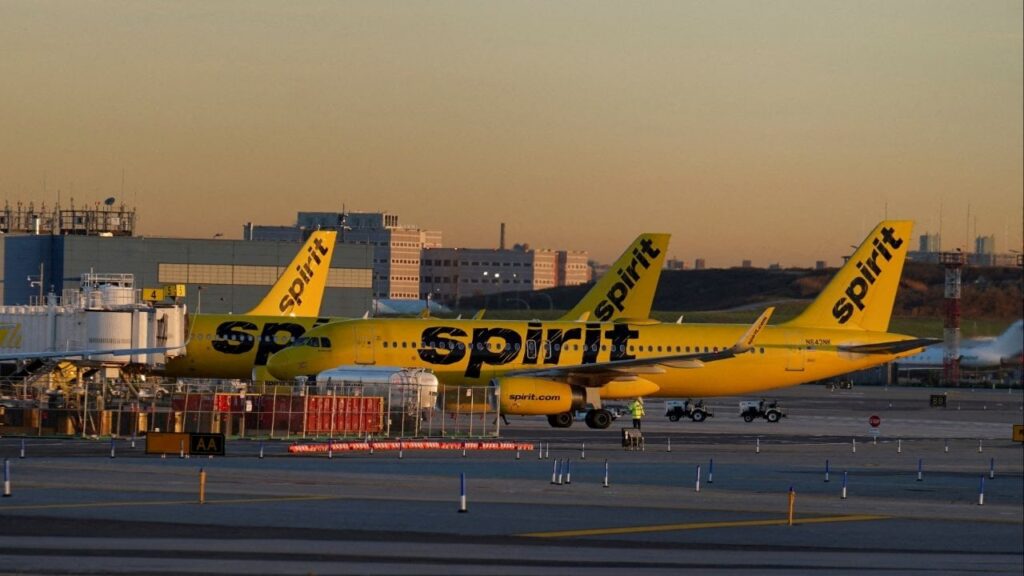There’s a lot of misinformation floating around out there about homelessness in California. We use data to dispel several common myths. (CalMatters/Kristian Carreon)

- 90% of California's homeless population lived in the state when they became unhoused, debunking the "outsider" myth.
- While addiction and mental illness rates are higher among the homeless, these issues do not affect everyone.
- Many unhoused individuals are employed but unable to afford rent. Most would accept suitable shelter if offered.
Share
|
Getting your Trinity Audio player ready...
|
Homelessness is one of the most prominent, hardest to solve — and most polarizing — problems California faces today. It’s an intensely emotional issue, as images of squalid encampments are enough to bring many to tears. But it’s also an intensely political one, with state and local leaders squabbling over how best to address the crisis, all while facing acute pressure from their constituents to act.

Marisa Kendall
CalMatters
So it’s no wonder that when it comes to the homelessness crisis, there’s a lot of talk out there — and not everything you hear is true. Here are some of the most common myths surrounding homelessness. Let us help you separate fact from fiction, using data.
Myth: Most Unhoused People Come Here From Somewhere Else
FACT: It’s often said that people who are down on their luck move here because of the nice weather and abundant social services. But the data doesn’t bear that out.
The vast majority of people who are homeless in California are from California — and most are still living in the same county where they lost their housing, according to a recent large-scale survey of unhoused Californians conducted by the UCSF Benioff Homelessness and Housing Initiative. The survey found 90% of participants were from California (meaning they lived in California when they became homeless) and 75% lived in the same county where they were last housed. And 66% were born in California, while 87% were born in the United States.
Local data shows the same thing. In Santa Clara County, for example, 85% of people surveyed during the 2023 point-in-time count reported they were residents of the county when they became homeless. And 54% had lived in Santa Clara County for 10 or more years.
Related Story: Dog Attack Turns Lethal for Homeless Man in Fresno
Myth: Everyone Living on the Street Is Addicted to Drugs or Mentally Ill
FACT: People living on the street are more likely to experience addiction or a mental illness than the general population — but by no means do those two conditions affect everyone.
When asked if they had ever been hospitalized due to a mental health condition, 27% of homeless Californians surveyed by UCSF said yes. One in three reported attempting suicide at some point during their life. And 23% reported ever experiencing a significant period of hallucinations, while 25% said they had been diagnosed with post traumatic stress disorder.
When it comes to drug use, 56% of people surveyed by UCSF reported ever using amphetamines regularly, 33% reported ever using cocaine regularly, and 22% reported ever using non-prescribed opioids regularly.
Newly released data from Los Angeles County found similar results — 24% of people surveyed during this year’s point-in-time count reported having a serious mental illness, and 27% reported a substance use disorder.
Those rates are far higher than among the general population. Less than 4% of adults in California have a serious mental illness, according to the California Health Care Foundation. Rates of mental illness are higher in families with incomes below the federal poverty line, and among people who are incarcerated.
Meanwhile, 9% of Californians met the criteria for a substance use disorder in 2021, according to the California Health Care Foundation.
Myth: Most People Living on the Streets Are Veterans
FACT: Veterans are disproportionately represented in California’s homeless population. But thanks to a major effort by the federal government to end veteran homelessness over the past decade, the number of homeless vets in California has dropped significantly — falling from nearly 16,800 in 2011 to almost 10,400 in 2022. But in recent years, the number has plateaued. State-funded homes for unhoused vets are underused.
Now, new efforts to tackle homelessness are setting aside special resources for unhoused vets. Proposition 1, a recently approved $6.4 billion bond, promises to create 4,350 new homes for unhoused people who need mental health and addiction services. About half of those new homes will be reserved for veterans.
How great is the need for those services? Of the homeless Californians surveyed by UCSF, 6% reported serving in the military. Of those who served, just 19% reported receiving benefits from the Veterans Administration.
Santa Clara County’s 2023 point-in-time count tallied 508 unhoused veterans — 5% of the county’s total homeless population. This year, San Francisco counted 587 homeless veterans — 7% of the city’s total homeless population.
Related Story: Under Newsom’s Governorship, Homelessness Crisis Still Haunts California
Myth: People Who Are Homeless Don’t Work, and Don’t Want to Work
FACT: Some people who don’t have a home still hold down one or more jobs, while others are trying to find work.
Among the homeless Californians surveyed by UCSF, 18% reported earning income from a job (either formal employment or informal/gig work) in the past month. When the researchers eliminated people who were older than 62 or had mental or physical disabilities from the data, the percentage was higher — 25% reported working in the past month.
But even if people are working, they aren’t making enough to afford rent. Fast food workers, for example, make a median wage of $17.32 an hour in California, but they’d need to make more than twice that to rent a one-bedroom home, according to the National Low Income Housing Coalition.
That doesn’t mean people aren’t trying. Of everyone surveyed by UCSF, 44% said they were looking for work. Others made ends meet in other ways; 40% reported earning income from recycling or odd jobs.
Many participants reported barriers to working or finding work, including: their age, a disability, lack of transportation to and from a job, a criminal record, and the amount of time they spent trying to find food, water and shelter, while also safeguarding their belongings on the street.
In San Francisco, 17% of homeless residents surveyed during the 2022 point-in-time count were working, while 32% were unemployed and looking for work, 32% weren’t looking for work, and 20% were unable to work.
Job loss also contributed to many people becoming homeless. In San Francisco, 21% of people surveyed in 2022 reported that losing their job was what drove them into homelessness.
Myth: People Who Are Homeless Don’t Want Shelter or Housing
FACT: City leaders will sometimes label homeless residents as “service-resistant” if they refuse to accept shelter or other services. But outreach workers say the reality is much more complicated.
“A lot of people want to go inside, but they also want to be met halfway,” said Shaunn Cartwright, who has worked with homeless communities in San Jose for years. “Why would I go into a tiny home if I’m only going to be thrown out later? Or why would I want to go into a tiny home if there’s no housing after?”
Other people living on the streets have severe post traumatic stress disorder, or other mental health conditions, and can’t live in a barracks-style shelter where dozens of people sleep side-by-side on cots, she said. Many shelters also prohibit pets, won’t let couples bunk together, or don’t have room for people to store their belongings. All of those restrictions deter many people from accepting a placement.
But data suggests that when people are offered shelter that meets their needs, they are likely to accept it. Cities and counties throughout California opened hotels and motels for homeless residents during the COVID-19 pandemic, through the state’s Project Roomkey program. It was a novel idea at the time – offering private rooms as shelter for homeless residents, instead of the traditional barracks-style model. And it was widely used, according to a recent statewide analysis of the program. That proves that people are eager to come inside given the right conditions, Nichole Fiore, a principal associate with research firm Abt Global, who co-authored the report, told CalMatters in May. She said people who had refused shelter in the past were willing to try Roomkey.
“People will come indoors if they are offered autonomy, safety, privacy, if they’re able to keep their partners, their pets, their possessions,” Fiore said. “When their needs are met and their needs are considered, then people will come indoors.”
Related Story: Supreme Court Allows Cities to Enforce Bans on Homeless People Sleeping Outside
Myth: If You Want to Help, Leave Food at a Homeless Encampment
FACT: Leaving food at a homeless camp, without first asking what type of food the residents there want – or if they even want food at all – actually can cause more harm than good.
“You’ll just see boxes of food just sitting on a corner,” Cartwright said, “and you can tell that somebody dropped it off but it’s not necessarily what people are interested in.”
Uneaten food will sit there and rot, attracting rats and flies, and making the entire area smell. And rotting food can add to an encampment’s garbage problem, making it more likely the authorities will come and sweep the camp, forcing the residents to leave.
Illegal dumping already is a major problem at homeless encampments, Cartwright said. Sometimes people who live in nearby houses will take their trash to the camp and dump it – leaving the camp residents to deal with trash that was never theirs to begin with, she said.
If you do want to help, Cartwright has some advice: “Ask the people in the area, ‘Hey, what are you guys into?'”
About the Author
Marisa Kendall covers housing for CalMatters. Her stories focus on homelessness, housing affordability, and state efforts to boost California’s supply of homes. Marisa previously covered housing for the San Jose Mercury News and the East Bay Times. She started her newspaper career at the Wichita Eagle in Kansas.
About CalMatters
CalMatters is a nonprofit, nonpartisan newsroom committed to explaining California policy and politics.
RELATED TOPICS:
Categories



















